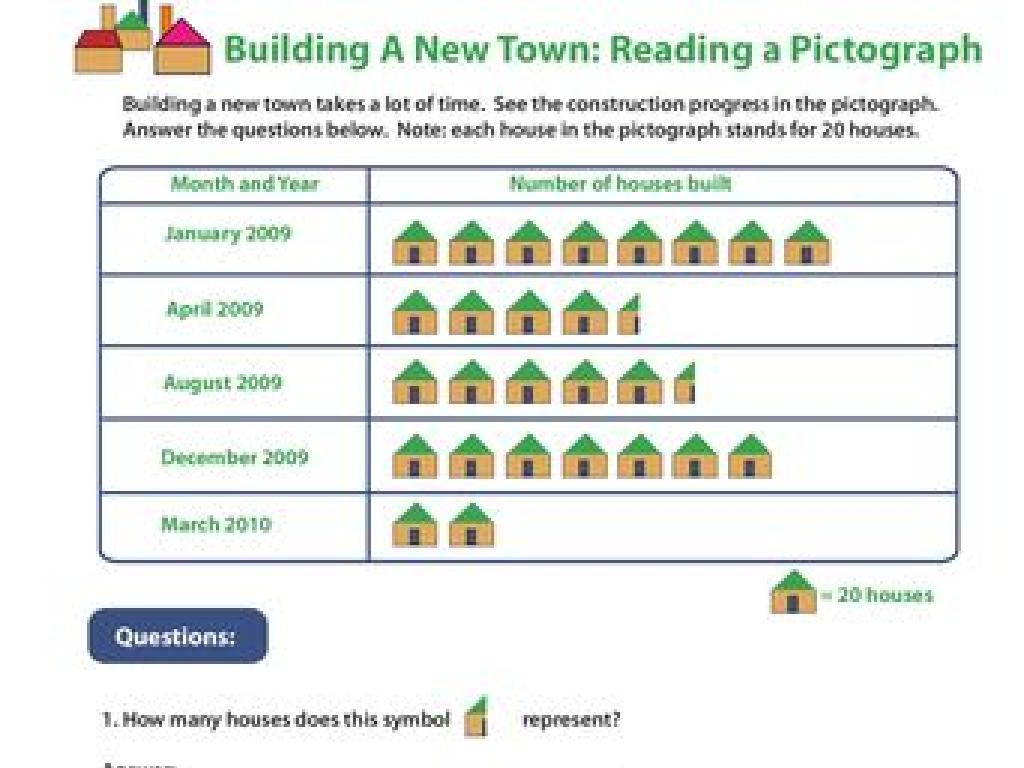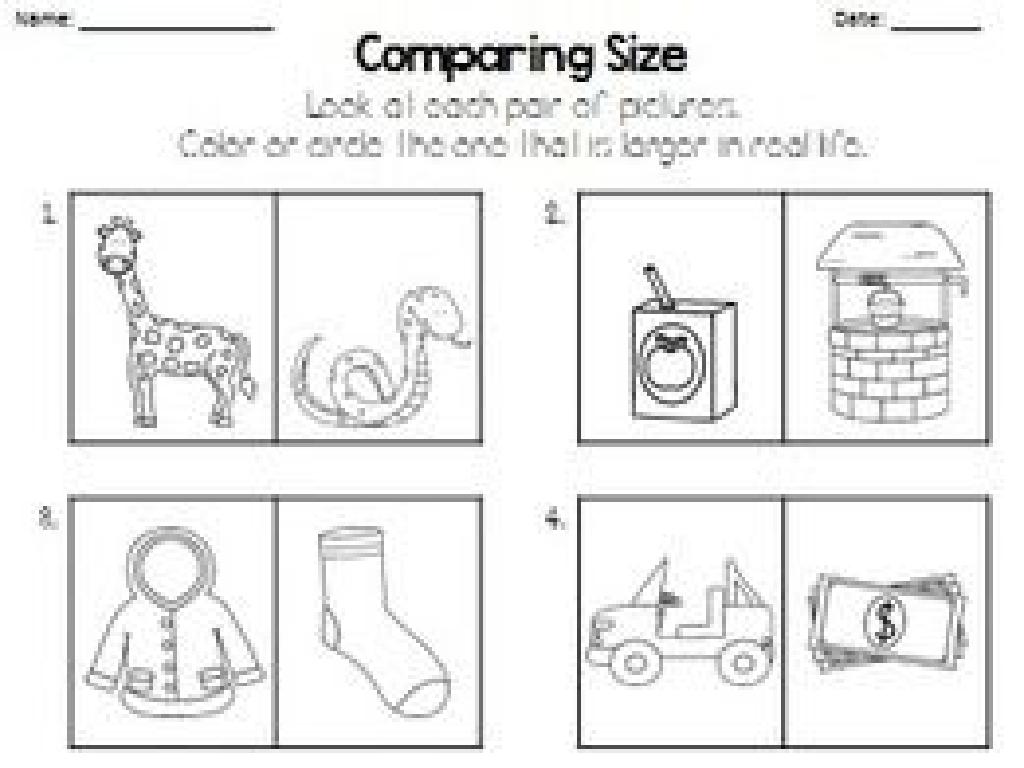Write A Ratio Using A Fraction
Subject: Math
Grade: Sixth grade
Topic: Ratios And Rates
Please LOG IN to download the presentation. Access is available to registered users only.
View More Content
Introduction to Ratios
– Understanding the concept of ratios
– A ratio shows the relative sizes of two or more values
– Defining what a ratio is
– It’s a way to compare quantities of different items
– Identifying ratios in daily life
– Examples: recipe ingredients, speed (miles/hour)
– Writing ratios as fractions
– If there are 2 apples for every 3 oranges, the ratio is 2/3
|
This slide introduces the concept of ratios, which are an essential part of mathematics and are used to compare different quantities. Start by explaining that a ratio shows how much of one thing there is compared to another. Use relatable examples such as ingredients in a recipe or speed signs to illustrate ratios in everyday life. Emphasize that ratios can be written in different forms, including as fractions, which is a common representation in math. Encourage students to think of their own examples of ratios from their daily experiences. The goal is for students to understand that ratios are all around them and are a useful tool for comparison.
Representing Ratios with Fractions
– Ratios show comparison
– Ratios as fractions
– A ratio can be written as a fraction, like 1/2 for one out of two
– Example: Apples to Oranges
– If you have 3 apples and 6 oranges, the ratio is 3/6
– Simplifying ratio fractions
– Simplify 3/6 to 1/2 to show the simplest form
|
This slide introduces students to the concept of ratios and how they can be expressed using fractions. Start by explaining that a ratio is a way to show the relationship between two quantities. Emphasize that writing ratios as fractions is a common method in math, especially when dealing with parts of a whole. Use the apples to oranges example to illustrate how to write and simplify ratios in fraction form. Encourage students to think of ratios as comparisons and to practice simplifying fractions to their simplest form to accurately represent ratios.
Writing Ratios as Fractions
– Ratios represent comparison
– Ratios can be written as fractions
– A ratio of A to B can be written as A/B
– Simplify ratios like fractions
– Divide both terms by their greatest common divisor
– Practice with colored marbles
– Example: Ratio of blue to red marbles is 6/8, simplified to 3/4
|
This slide introduces students to the concept of expressing ratios in fraction format. Start by explaining that a ratio is a way to compare two quantities. Then, show how these comparisons can be written as fractions. Emphasize the importance of simplifying ratios by finding the greatest common divisor, just as they would simplify a regular fraction. Use the example of blue and red marbles to provide a concrete practice opportunity. Encourage students to find other examples of ratios in their daily lives and express them as simplified fractions.
Real-Life Ratios: Understanding Through Examples
– Ratios in daily life
– Solving problems with ratios
– Use ratios to compare quantities and solve problems
– Recipe adjustments example
– If a recipe for 4 needs 2 eggs, for 8 you need 4 eggs (2:4 becomes 4:8)
– Discussing ratios around us
– Where have you noticed ratios? In sports, cooking, or art?
|
This slide aims to help students see the practical application of ratios in everyday life. Start by discussing what ratios are and how they are used to compare different quantities. Move on to problem-solving, showing how ratios can help in making decisions and solving real-world problems. Use the example of adjusting recipes to different serving sizes to illustrate how ratios are used in cooking. Encourage students to think of other areas where ratios are present, such as in sports statistics, mixing paints in art, or even in their own household chores. This will help them understand the concept of ratios as a relationship between two quantities and see the relevance of math in their daily lives.
Class Activity: Exploring Ratios in Our Environment
– Find real-world ratios
– Write ratios as fractions
– For example, if there are 2 red apples and 3 green apples, the ratio is 2/3
– Share your ratios with the class
– Discuss different ratio representations
– How else can we express the ratio of red to green apples?
|
This activity is designed to help students identify and express ratios they encounter in everyday life. Encourage them to look around the classroom or think about scenarios at home where they can spot ratios. They should write these ratios down as fractions, representing the comparison between two quantities. After they have found and written their ratios, students will share their findings with the class, which will help them understand how ratios can be represented in different ways, such as fractions, words, or using the colon symbol. Possible activities include finding ratios in the number of books on a shelf, the amount of boys vs. girls in the class, or different colored objects in a set. This will reinforce their understanding of ratios in a practical context.
Practice: Writing Ratios as Fractions
– Work on practice problems individually
– Solve examples as a class
– We’ll work through problems like 3:1, which means 3 of one thing for every 1 of another
– Learn tips for writing ratios
– Always write the first term of the ratio as the numerator
– Understand ratio to fraction conversion
– A ratio of 4 to 5 can be written as the fraction 4/5
|
This slide is dedicated to practice and understanding how to write ratios as fractions. Students will begin with individual practice to apply what they’ve learned. Then, as a class, we’ll work through examples together, ensuring that everyone understands the process. Emphasize the importance of consistency when writing ratios as fractions, such as keeping the order the same and reducing fractions when possible. Provide tips like writing the first term of the ratio as the numerator and the second term as the denominator. Encourage students to ask questions during the walkthrough of examples. For the teacher: Prepare diverse examples and be ready to assist students who may need extra help. Consider creating small groups so students can help each other under your supervision.
Review and Recap: Ratios as Fractions
– Recap key lesson points
– Ratios compare two quantities, like 3:2 or 3/2
– Understand ratio importance
– Ratios help solve real-world problems, like cooking or budgeting
– Engage in Q&A session
– Ask questions to clarify understanding
|
This slide aims to consolidate the students’ understanding of writing ratios using fractions, an essential skill in mathematics that applies to various real-life situations. Begin by summarizing the key points of the lesson, ensuring students can write and interpret ratios in fraction form. Emphasize the importance of ratios in everyday contexts, such as following a recipe or managing finances. Conclude with a Q&A session to address any uncertainties and reinforce learning. Encourage students to think of their own examples where they use ratios, and be prepared to guide them through any difficulties they may have encountered during the lesson.
Homework: Mastering Ratios as Fractions
– Complete the Ratio Worksheet
– Practice writing ratios in fraction form
– For example, the ratio of 2 to 3 can be written as 2/3
– Understand ratio concepts thoroughly
– Grasp the idea that ratios compare two quantities
– Get ready for the Ratio Challenge!
– A fun activity to test your knowledge on ratios
|
This homework assignment is designed to reinforce the concept of ratios expressed as fractions. The worksheet provided will have a variety of problems that require students to convert given ratios into fraction form. It’s crucial for students to understand that a ratio is a way to compare two quantities and writing it as a fraction is one method of representation. Encourage students to think of ratios in terms of parts of a whole, similar to fractions. The Ratio Challenge planned for the next class will be an engaging activity to assess their understanding and application of ratios. Provide examples on the worksheet like 4:5 as 4/5 and 7:2 as 7/2 to guide them. The notes for the teacher should include reminders to check for common misconceptions and to provide individual support as needed.





